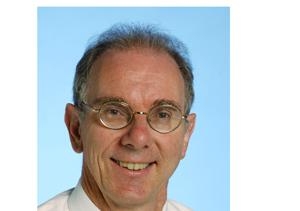Not so fast! How car commuting is taking your time
Our obsession with speed and our reliance on cars as a supposedly fast mode of transport may be an underlying cause of our lack of time, writes Paul Tranter.
Our obsession with speed and our reliance on cars as a supposedly fast mode of transport may be an underlying cause of our lack of time, writes Paul Tranter.

OPINION: Are you addicted to speed? Has a “hurry virus” taken over your life?
Building faster roads or buying a fast car or a second car may seem appealing solutions to time pressure. Yet our obsession with speed, and our reliance on cars as a supposedly fast mode of transport, may be an underlying cause of our lack of time. The more we rely on “time-saving” machines such as cars, the more time we lose. The following anecdote helps resolve this paradox.
Imagine living in a village, where your job each day is to collect a bucket of water from the river. This takes an hour each day. To “save time” you build a machine to fetch the water. However, to make the machine work, you need to spend two hours each day winding up a spring.
In modern cities, the equivalent of “winding up the spring” is the time spent at work earning the money to pay for all our transport costs. For pedestrians, this time is virtually nil. For cyclists it is minimal. For car drivers, the time spent earning the money to pay for all the costs of cars is usually much greater than the time spent driving.
Motorists may think they are saving time with their cars when it takes 20 minutes to drive to work, compared to 30 or 40 minutes on a bicycle. However, motorists might be spending one or two hours per day (or more) earning the money to cover the cost of their cars, while cyclists spend only a few minutes per day earning the money to pay for their bicycles.
The concept of “effective speed” takes into account all the time costs of any mode of transport, not just the time spent travelling.
When the various costs of cars are taken into account, their effective speeds are surprisingly low. Estimates of effective speed show how slow cyclists can travel and still be effectively faster than a car.
Cyclists in Melbourne or Sydney who can average around 15km/h would be effectively faster than a motorist on an average income in the “fastest” new car (that is, the one with lowest operating costs). In New York, cyclists would need to cycle at only 9 km/h to be effectively faster than a car. In London, 7 km/h would place cyclists ahead of the fastest new car.
The higher trip speeds of cars do not save time; instead they encourage longer travel distances as the city spreads out and local shops, schools and services close. In cities dominated by cars people spend more time travelling by motorised transport than in cities where public transport and cycling are the main modes.
As the speed of cars increases, so does the cost. When motorists drive faster to save time, the few seconds they may save will cost much more than that in the time needed to pay for the extra fuel, wear and tear on the car, and stress. Paradoxically, switching from the car to the bicycle will reduce the total time we spend on travel, as well as boosting our health directly through increased physical activity.
Unlike drivers, increases in trip speed for cyclists could result in a substantial increase in their effective speed. This is because the main time component for cycling is the time spent on the bicycle. Increases in trip speeds for cyclists could be achieved with minimal cost.
If governments understand the concept of effective speed they will also appreciate the futility of trying to save time by trying to increase the average trip speeds of private motor vehicles. Cities that invest most effectively in cycling infrastructure will have more time and money to devote to things other than transport, including health promotion.
Improving urban health might be as simple as valuing the time of cyclists more than the time of motorists.
Associate Professor Paul Tranter is a Geographer in the School of Physical, Environmental and Mathematical Sciences at UNSW Canberra.
This opinion piece first appeared in The Conversation.